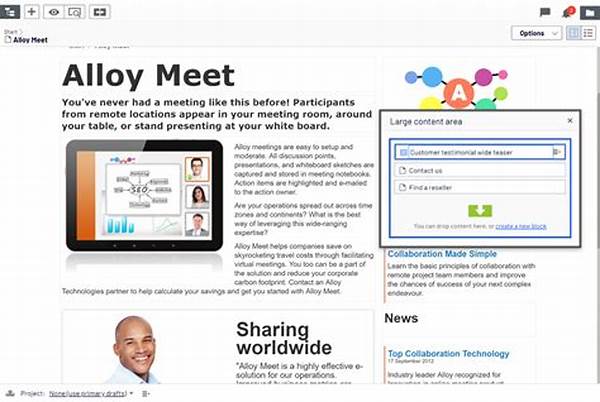In today’s digital age, integrating multimedia into book websites is not just a trend; it’s becoming a necessity. As readers and potential customers browse for their next book, they’re looking for engaging experiences that transcend the static realm of traditional reading. Infusing multimedia elements—such as videos, interactive graphics, and audio clips—into book websites can offer a more enriched and engaging experience, captivating visitors in unique ways and potentially boosting sales and interest in the books.
The Impact of Multimedia on User Engagement
Integrating multimedia in book websites significantly enhances user engagement. With the use of videos, authors can provide sneak peeks of their book tours, offer virtual readings, or introduce themselves to readers. Interactive graphics can provide visual insights into complex plot structures or character development, allowing readers to immerse themselves even before turning a page. Audio elements like podcasts or excerpts read by the author can offer auditory delight, catering to those who might prefer listening over reading. These dynamic elements not only retain visitors longer but also create memorable experiences that encourage sharing and revisitation. By integrating multimedia, authors and publishers can forge a lively interactive space poised to compete in a crowded literary market.
Benefits of Integrating Multimedia in Book Websites
1. Enhanced User Experience: Integrating multimedia in book websites offers users richer, dynamic interactions, which can create a memorable browsing experience.
2. Increased Time on Site: Multimedia elements entice users to spend more time exploring the website, potentially leading to higher conversion rates.
3. Improved Accessibility: Audio and visual aids on book websites can make content more accessible for people with reading difficulties or visual impairments.
4. Broadened Marketing Reach: Videos and interactive content are highly shareable, potentially attracting a wider audience to the book website.
5. Engagement with Younger Audiences: Younger readers often seek interactive experiences, and integrating multimedia in book websites meets this interest, keeping them engaged.
Challenges and Considerations
One of the main challenges of integrating multimedia in book websites is ensuring that the added elements are both relevant and enriching for the content. A poorly-made video or irrelevant interactive feature can detract from the reader’s experience, potentially leading to frustration rather than engagement. It’s crucial to strike a balance between creative multimedia additions and the storyline or message the author wishes to convey. Additionally, one must consider the varying internet connectivity speeds of users; large multimedia files might take time to load, thus affecting user experience negatively. Careful moderation and strategic deployment are key to successful integration.
Furthermore, integrating multimedia in book websites requires thoughtful planning and investment. Collaborating with skilled multimedia professionals can ensure that the quality is up to par, which in turn complements the author’s literary work rather than overshadowing it. For authors and publishers, understanding how to leverage various types of multimedia to fit the book’s theme and audience is paramount.
Crafting a Multifaceted Reading Experience
Authors and publishers looking to enrich book websites through multimedia should focus on crafting a seamless and multifaceted reading experience. Integrating multimedia in book websites doesn’t simply mean adding videos or sound bites for the sake of trend; it involves storytelling through different mediums. A well-produced book trailer, for instance, can unfold the narrative in a visual form, luring readers with compelling visuals and background scores. Similarly, using audio excerpts leveled to perfection can add a personal touch to the visitor’s experience.
Moreover, creating interactive maps or character timelines can allow readers to delve deeper into the stories they’re about to encounter. These features encourage exploration, making the online book journey multidimensional. By carefully selecting and producing multimedia content, authors can offer an immersive prelude to their book’s world, providing readers a comprehensive insight before they even dive into the first chapter.
Tips for Effective Multimedia Integration
1. Alignment with Content: Ensure multimedia elements align with the theme and content of the book.
2. Balance and Moderation: Avoid overwhelming users with too much content; quality over quantity is key.
3. User Testimonials and Reviews: Incorporate multimedia testimonials and reviews that highlight reader experiences and engagement with the book.
4. Seamless Navigation: Make sure users can easily navigate through the multimedia on the website without confusion.
5. Focus on Storytelling: Use multimedia to enhance storytelling, providing readers with a deeper emotional connection.
6. Optimization for Devices: Ensure that multimedia content is optimized for various devices to improve accessibility.
7. Interactive Engagements: Encourage user interaction with quizzes or polls related to the book’s content.
8. Rich Visuals: Invest in high-quality visuals and graphics that complement the book’s aesthetic.
9. Author Involvement: Highlight author behind-the-scenes content to create a connection with the audience.
10. Regular Updates: Keep multimedia content fresh with updates that coincide with book releases or events.
Navigating the Future of Book Promotion
The integration of multimedia in book websites showcases a proactive shift towards captivating the digital audience’s interest. As technology continues to evolve, publishing entities must consistently update their strategies to incorporate new multimedia tools and trends. Integrating multimedia in book websites not only enhances promotional efforts but also enriches the reader’s journey, forging pathways to interaction that traditional methods lack. While the literary world remains anchored in storytelling, multimedia aids in reaching out to an audience that craves vivid, interactive experiences. With careful integration, authors can engage in a holistic conversation with their readers, making every visit to the website an adventure of its own.
For authors and publishers, staying abreast of technological advancements and multimedia trends is imperative in capturing and retaining the interest of modern-day readers. It’s a blend of innovation and tradition that, when executed well, can lead to longstanding success in a competitive market. Integrating multimedia in book websites is no mere option—it is a gateway to the future of immersive storytelling.
